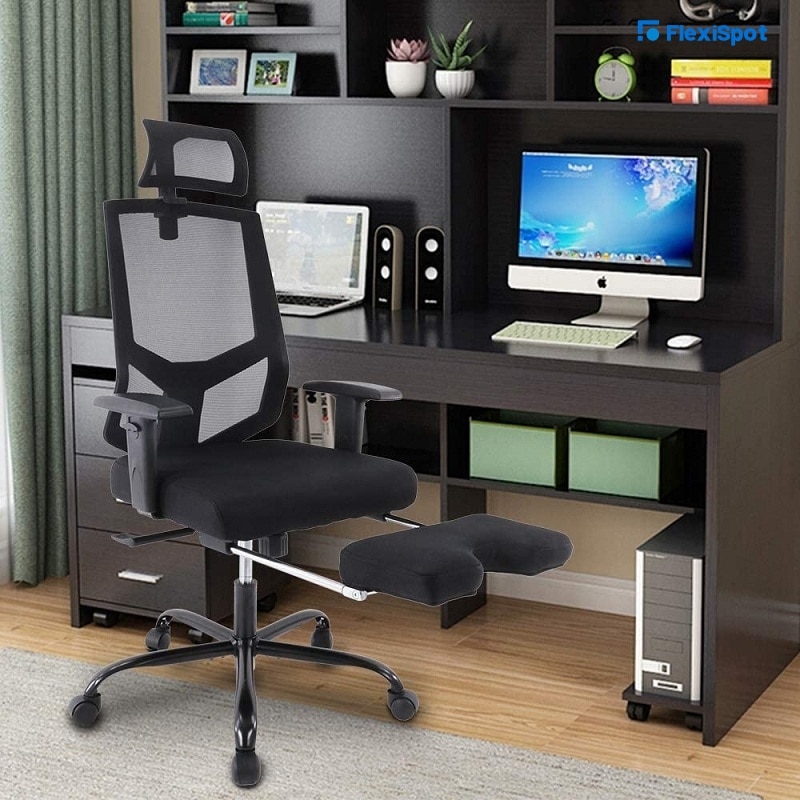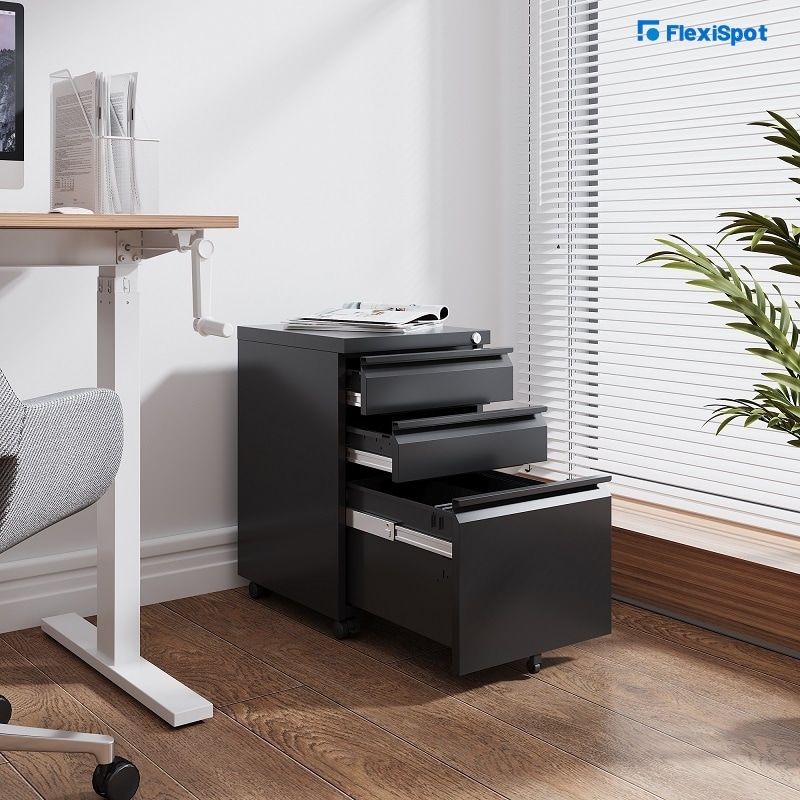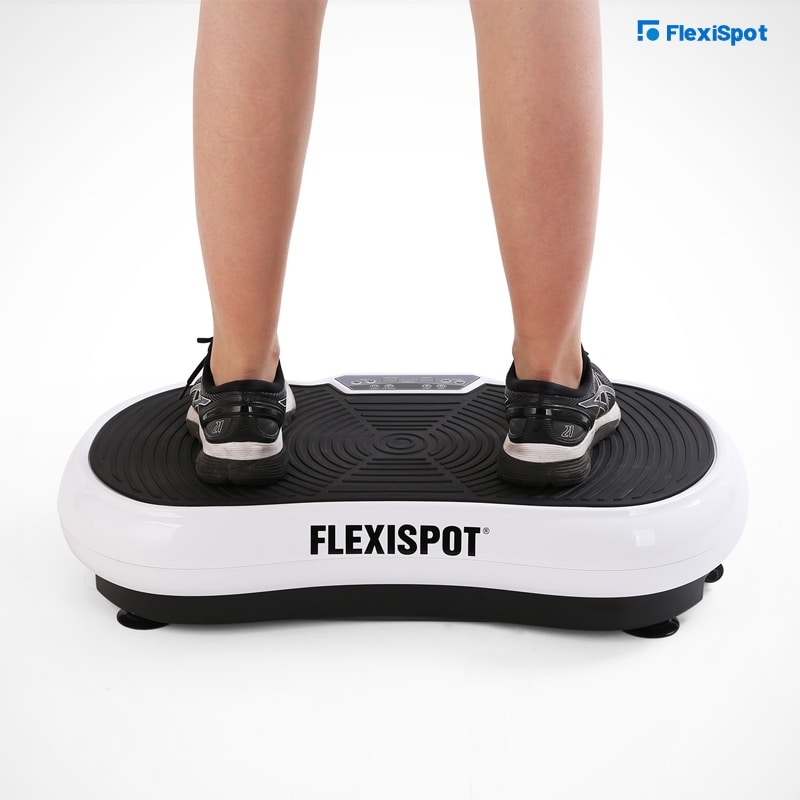An architect’s work is not over when he finishes his design. The physical manifestation of that design into blueprints, building materials, and even the structure itself are all in an architect’s realm. Unfortunately for architects, the nature of their profession results in their time being mainly spent standing up while surveying their designs or working on them with a pencil to paper.
The potential strain on the human body from spending long periods of time standing can be alleviated by using a standing desk. But what is the best type of standing desk for an upwardly mobile architect?
The past few years have seen a substantial rise in the popularity of adjustable-height standing desks. While somewhat pricier than their static counterparts, these workstations allow users to alternate between sitting and standing throughout the day. This can be an effective way for office workers with sedentary jobs to reduce the health risks associated with taking multiple breaks every day to sit.
Let’s dive into the best standing desk set up for the most upwardly mobile architect out there in the field.
The Ideal Height-Adjustable Drafting Table
Working while sitting can take all the joy and zest out of your creative drive. Electric adjustable drafting tables help you boost creativity by staying active, even if it's just for a little while, on this one task or another! Height adjustable desks feature unique design cues that help you keep tabs on even the most complicated drafting tasks. You also get the flexibility of switching from working while sitting to working on your feet at the press of a button.
If you're feeling creatively drained, it may be because of the way your desk is designed. Let’s look at the specs of one of the most recommended Height Adjustable Drafting Tables you can find.
Lifting Mechanism: Motor
Leg Lift Stages: 2-stage
Max Height ranges: 28.7"to 48.4"
Tilt Angle Range: 00 to 40°
Lift Speed: 1" per sec
Memory Presets: 4
Desktop Size: 47.2"x23.6"
Max Weight: 110 lbs
Input Voltage: 100 - 240V
Desktop Material: 0.68” thick Chipboard
With that, you have a viable baseline for selecting an appropriate standing draftsman table. But, what else should you look for in an ideal fit for your office or home workspace? Let's explore:
Factors to Consider When Selecting a Height Adjustable Drafting Table
Tillable desktop surface
An architect's job is more than merely drafting designs on a piece of paper. That's why you probably have various desks in your studio. But, what's needed is a versatile desk that can tilt to allow you to do the following things:
Setting the desk at 00 to enable you to work on CAD software on a computer
Setting the desk at 150 when writing technical specs or responding to client briefs and other pertinent communication
Setting the desk at 300 to enhance your comfort when reading journals and other publications on the latest design conventions.
Setting the desk at 400 helps you stay in “the creative zone” when drawing
A Safety Ledge Stopper
You rely on a wide array of tools and devices to help you get the job done. Unfortunately, you only possess two hands, so your tools, paperwork, and devices can slide off the surface of your desktop when in tilt.
Having a safety ledge stopper gives you a way to prevent this when your desk is tilted at whatever angle.
Expandable Partitions
As an architect, you understand that there's no such thing as too much desktop space. Electing to have a desk with a drop leaf design allows you to expand your desktop when you need more space. You can also fold it up to fit a smaller space or don't need all that clutter on your workspace.
Integrated Storage Spaces (Drawers)
A pull-out drawer embedded into your desktop helps you stow away the supplies you need to use in the present moment. It also makes them easier to access at a moment’s notice.
A Programmable Height Adjustment Panel
Insist on a standing drafting table that comes with programmable memory buttons. This can help you set up at least 4 of your favorite sit/stand positions. With that, you can switch between your preferred postures at the flick of a button.
An Ergonomic Office Mesh Chair
Design, aesthetics, and functionality are all part of an architect's toolset. Therefore, it helps if even your furniture serves as an extension of such qualities. That's why you should settle on an Ergonomic Office Mesh Chair.
Here are a few features to look for in an office chair that can complement any drafting table:
A Multifunctional Headrest
Having a high back office chair isn't enough if you work for hours on end. It would also be best if it came with an adjustable headrest. This feature enhances your comfort on trouble spots like the head, neck, and shoulders.
This feature offers proper upper body support that reduces your stress from drafting and performing other tasks. Once in place, such a headrest allows you to work comfortably for extended periods.
A Retractable Footrest
An overturn footrest features soothing pads that you can rest your feet on after a heavy load of labor-intensive tasks. With a retractable footrest, you don't need to get an ottoman. You can pop it out in place and rest your feet. What's more, it's comfortable to use regardless of your height or body weight.
An Ergonomic Armrest
Most office seats feature armrests, but most of these aren't adjustable. Consequently, they don't allow you to adopt a proper posture when tiling a drafting table's desktop. Therefore, you get a world of convenience when you insist on getting an office chair with a multi-functional armrest.
A Breathable Back Mesh
A seat with an air-tight mesh back not only allows for optimal air circulation and cooling on your back area. It also has a high-elastic mesh that contours to your back for effective spinal alignment.
This prevents moisture from collecting around your back, allowing you to continue working in comfort while alleviating most of the pressure from your spine.
Desktop Optimisations
Many architects and other professionals in design-heavy professions like having creative clutters. These are piles of random tools that look disorderly to the untrained eye, but serve the designer's creative process. But, at times, this can get out of hand and serve more as a distraction than a way to foster your design process.
Eliminating creative clutter may seem like a tall order but let's investigate some simple ways of dealing with the unnecessary mess.
Miles of Cabling
Are cables getting in your way? Well, you can’t simply remove them from your workstation because they power and connect all your electronics. One viable means of sorting them out is getting a Cable Management Kit & Organizer Set. This kit comes with Velcro zip ties that help you bind and even color-code cables making them more manageable.
You don't settle for your run-of-the-mill extension cable. Most extension cables serve the essential purpose but are tacky and pose a potential tripping hazard. What you need to get the most out of your limited space is a Power Strip with USB ports. Aside from charging and powering most of your devices, it can be grounded to your desk, eliminating the likelihood of tripping on errant cables.
Desktop Clutter
Keeping your desktop tidy enhances your efficacy and mitigates the stress of having everything all over your desk. Mesh Desk Organizer helps you organize and prioritize various aspects of your work life.
It adds some storage space to your standing desk. And, has various compartments that can help you sort out paperwork and store tools or your personal effects. Once you eliminate the clutter, all that's left is a clean desktop and a drive to ascend to higher heights in your career.
Additional Computer Mounts
A dual-screen setup can help you focus on an array of tasks from the comfort of one PC. The problem is that monitors take up a considerable amount of space even when they are of a small form factor. A Dual Monitor Mount not only reduces their footprint. It also allows you to align the screens to enhance your flexibility and engagement with the tasks at hand.
Mobile file storage
We live in a digital age, but we still depend on loads of paperwork. This can get out of hand at times, especially if file organization and data collation aren't your strong suit. Fortunately, you can use a lockable Mobile File Cabinet to help you sort and store your paperwork.
Working out the kinks in your body
Standing or sitting for over 10 hours in a day harms your body. But, sometimes, the tasks keep piling up. The problem is it can be too cold to go outside for a refreshing walk. And, you may not have the space for a comfortable couch to help you take a load off.
That’s not a problem if you can fix an under Desk Hammock beneath your adjustable drafting table. You can nod off a bit and get back to work refreshed and energized with that in place. Even more ideal is that installing or putting it back into storage doesn't take much time or require any specialized tools.
One of the vices that come with working a desk job is snacking all the time. We're not saying that it's a bad habit as it helps you keep up your energy levels. The problem is you may lack time to hit a treadmill or the trail to burn off all those extra calories.
A Vibration Plate Exercise Machine creates a full-body vibration, which stimulates muscle contractions. This activates the caloric burning process in your muscle tissues the way various workout stages do. Your metabolism receives a boost that improves overall circulation. You’re also able to burn off all that unwanted cholesterol, improve bone density and effectively mitigate pressure on your joints.
Conclusion
Working for many hours on end can be a drag even if you love what you are doing. And, many years of being at the top of your game will weigh you down even if you keep going harder at the job. Sure, taking some time off can help you ward off burnout. But, you're likely to burn out again if you return to the same setup.
Architects and other office workers who spend long hours sitting in front of a computer need to be aware of the dangers associated with prolonged periods of time spent in this position. Research from around the world has found that it leads to an increased risk for cardiovascular disease, diabetes, obesity, cancer, and other health problems.
With so many different options to choose from, it can be difficult for architects and other professionals who want a new standing desk. The best option may depend on the type of work you do as well as your personal preferences. It’s essential to consider all these factors before investing in a stand-up desk that could last for years or decades.
Hopefully, this small think piece shows you how to switch up things with a standing drafting table. And, more power to you if you can work on all of our suggestions!









